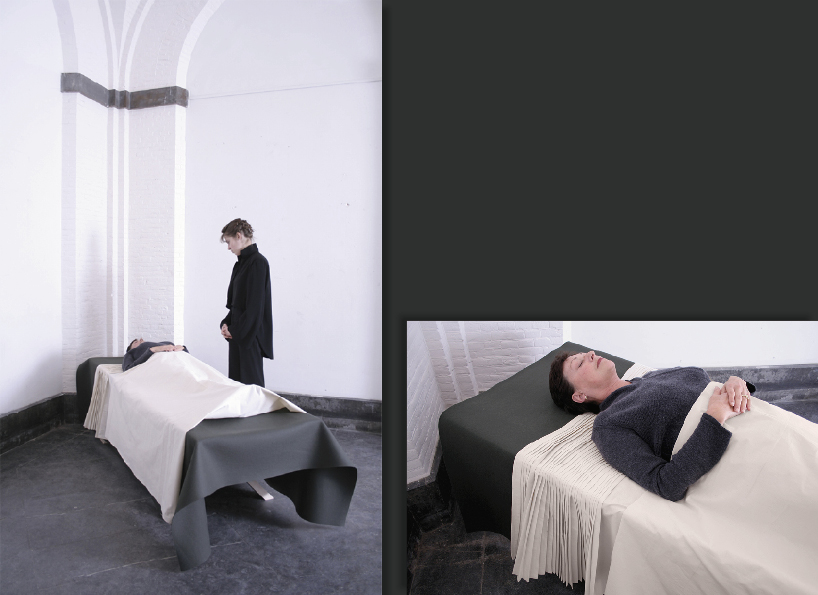
last fold by iefke.com from netherlands
designer's own words:
-LAST FOLD-
Introduction:
As a child growing up, I used to be afraid of death. During the course of my life I’ve witnessed several memorial services and every time felt the coffins were distancing. Death remained at arms’ length until in 2003 my father suddenly died. To lose someone so suddenly and then see him lie in state in a wooden casket was a very cold experience. The casket was fully or halfway open but even then to me it felt like a sealed off, static space surrounding the body of the deceased. Closing the coffin was a very emotional moment in which the lying in state and with it the visibility of the body ended. Closing the casket and sealing it with the screw caps felt very unnatural. This is when the idea originated to one day design a shroud, a way to make the deceased more approachable, and keep them close. The idea stuck with me for several years and when it was time to graduate from my Interior Design courses at the Royal Academy of Art in the Hague, I started to review my emotions and thoughts on the grieving process and how I could redesign the way to grieve ones loss.
Concept:
For this new way to say goodbye the most important criteria were: openness, layers, simplicity, human silhouette, and a feeling of security. Combining these concepts gave me the idea to view the shroud as a second skin, covering the human body. The shroud is a woollen cloak with a big collar in which the deceased is gradually swaddled, through a folding ritual. Just like a baby is swaddled at the beginning of their life, so is the deceased for their last journey. I have designed a folding ritual, to form part of a warm and honouring grievance process. The bereaved have a choice to fold the shroud by themselves step by step from the first day of passing until the final goodbye.
The first layer is made of unbleached cotton or silk and is partially pleated at the top. During the folding ritual a sophisticated fan shaped collar takes form. The second layer creates a secure and warm wrapping for the body and is made of 100% natural wool felt available in several different colours.
Ritual:
During the wake the two layers can be folded step-by-step, through which the image of the deceased gradually fades. In the first phase the hands and the upper body are still visible and can be easily touched. By closing the shroud gradually over several days the deceased is very lovingly and consciously swaddled. Before the bereaved close the second layer, some personal belongings can be given to the deceased. Then, when the second layer is closed half way, a big collar is formed covering the head of the deceased, giving it warmth and security. The definitive folding of the shroud is a very natural way of closing a woollen cloak. After the shroud is folded it will be sealed off with some delicate buttons.
Bier or carrier stretcher:
The deceased can be laid in state at home or at a memorial centre, with the choice of a bed or special bier furniture. For the shroud I have designed a matching stretcher, which can also serve as a carrier stretcher to escort someone to their final resting place. This carrier stretcher is made up of two solid wooden planks with a thin plywood plate in between. The milled handles are formed as an integral part of the planks. The plywood bends slightly to prevent the body from sliding during transport. One can choose to close the carrier stretcher with a lid or to place the wrapped body in a simple wooden casket at the end.
Finally:
Caring for the dead is an important part of any society. As society changes; the world becoming increasingly smaller and cultures mixing up and melting together, death care changes with it. In western cultures the use of a casket has been the prevailing way of encapsulating the remains. A corpse used to a bit scary, an appropriate distance would be kept, out of respect for the deceased. A casket encapsulating the body enhances this distance. In the west people are less used to showing their emotions, one is expected to keep their composure. Creating a symbolic distance to the remains of a deceased, makes this easier in a sense. In a way, the body after death, becomes an object that is nicely preserved in a wooden casket. As we’ve increasingly come in contact with more eastern ways of dealing with emotions, we’ve become more aware and maybe even more inclined to sharing them. In more eastern cultures shrouds are very common. Not only is it a very natural way of wrapping the body; as people have wrapped themselves in clothing throughout their life it feels only natural to wrap them in textiles on their last journey. It also keeps the deceased closer to the bereaved just after death. The body remains approachable and touchable. The remains are now more a part of the grieving process. And the deceased remains more like the person they used to be. The shroud can be used for people from various cultural backgrounds.
The strength of this design lies in the folding ritual, because of this step by step folding, the deceased is wrapped gradually by the people that love them and they can just as gradually try to deal with the irreversibility of their death. It’s as if the deceased is gently wrapped in the love of their loved ones.
folding ritual, step 1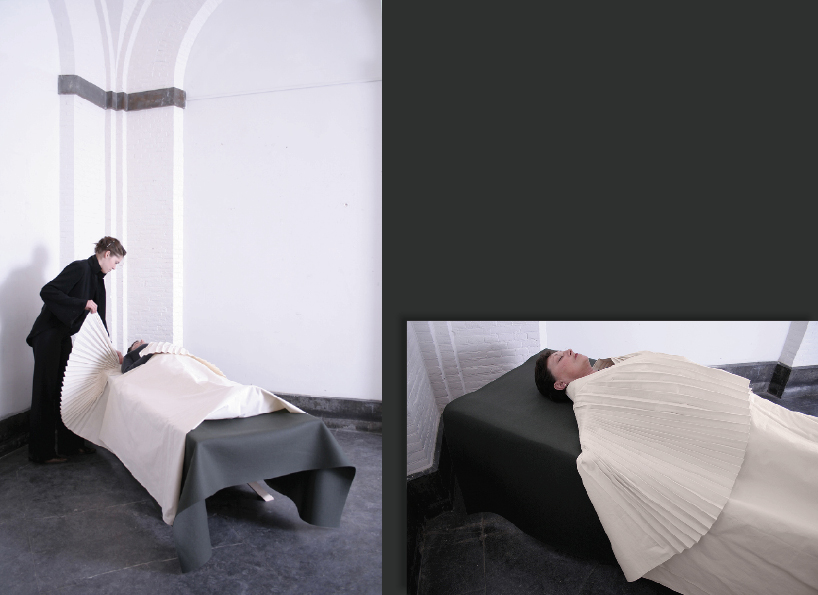 folding ritual, step 2
folding ritual, step 2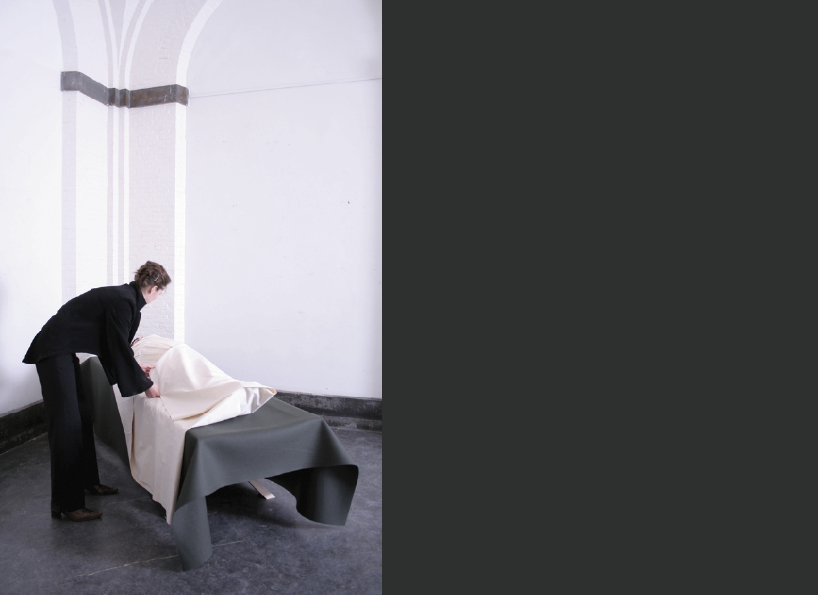 folding ritual, step 3
folding ritual, step 3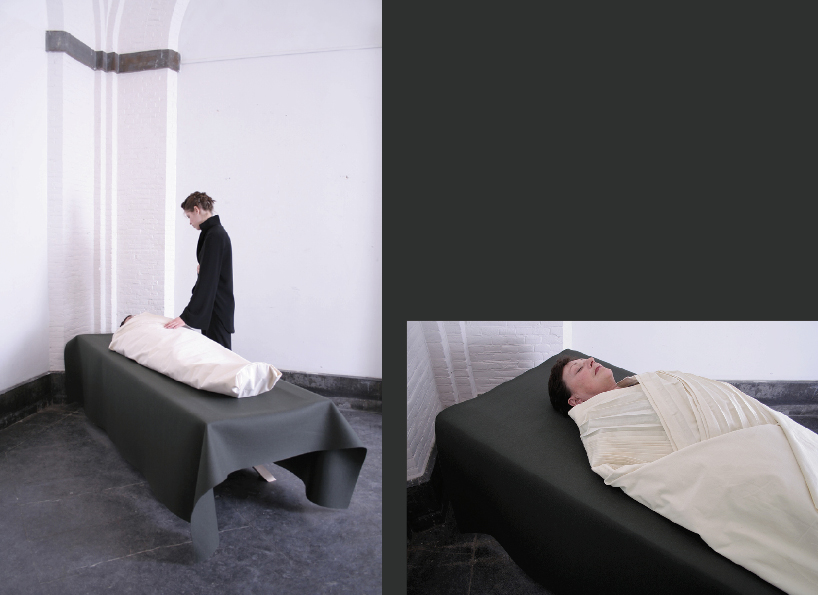 folding ritual, step 4
folding ritual, step 4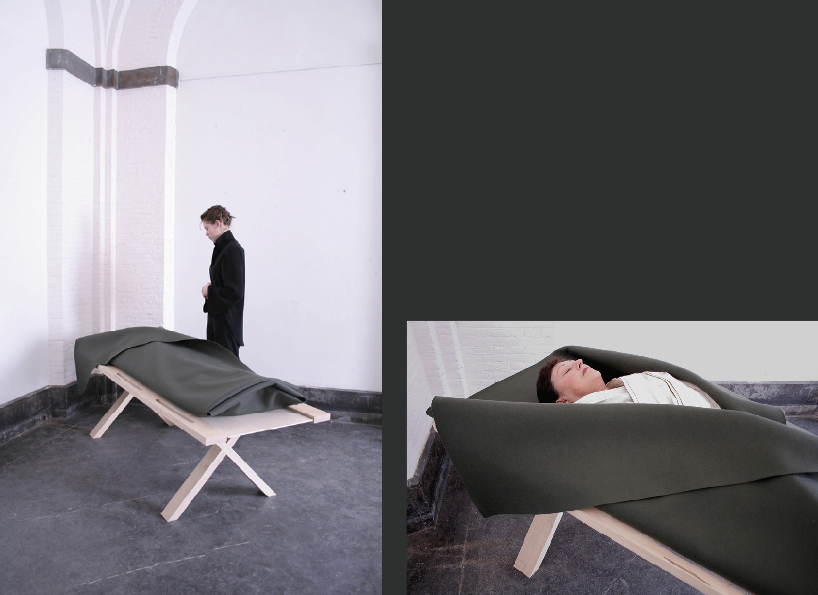 folding ritual, step 5
folding ritual, step 5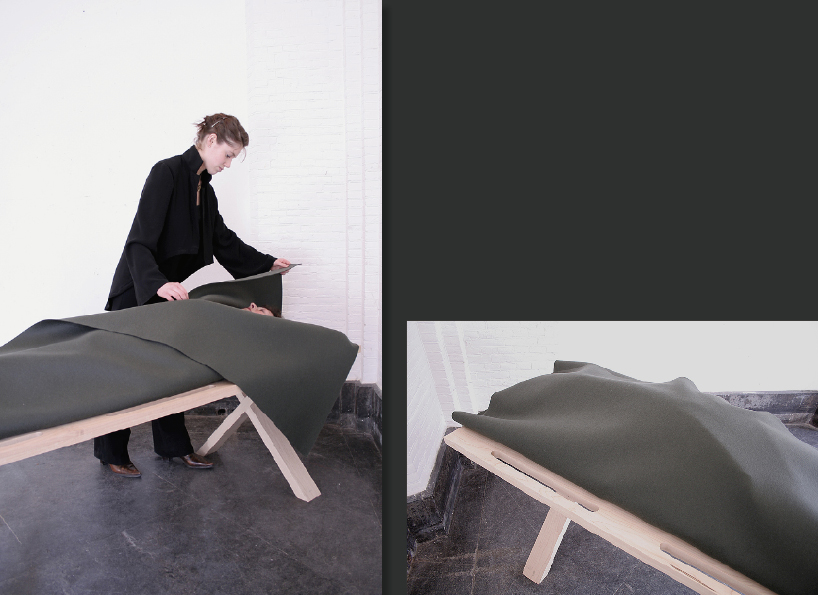 folding ritual, last step
folding ritual, last step